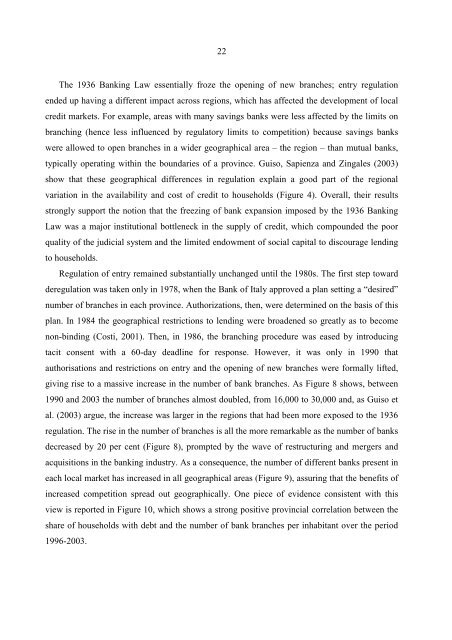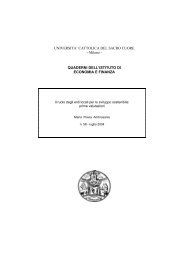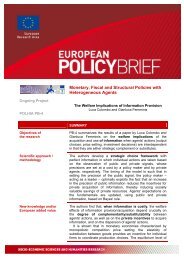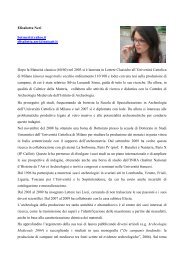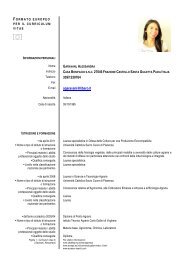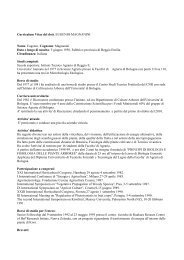REGULATION, FORMAL AND INFORMAL ... - ResearchGate
REGULATION, FORMAL AND INFORMAL ... - ResearchGate
REGULATION, FORMAL AND INFORMAL ... - ResearchGate
Create successful ePaper yourself
Turn your PDF publications into a flip-book with our unique Google optimized e-Paper software.
22<br />
The 1936 Banking Law essentially froze the opening of new branches; entry regulation<br />
ended up having a different impact across regions, which has affected the development of local<br />
credit markets. For example, areas with many savings banks were less affected by the limits on<br />
branching (hence less influenced by regulatory limits to competition) because savings banks<br />
were allowed to open branches in a wider geographical area – the region – than mutual banks,<br />
typically operating within the boundaries of a province. Guiso, Sapienza and Zingales (2003)<br />
show that these geographical differences in regulation explain a good part of the regional<br />
variation in the availability and cost of credit to households (Figure 4). Overall, their results<br />
strongly support the notion that the freezing of bank expansion imposed by the 1936 Banking<br />
Law was a major institutional bottleneck in the supply of credit, which compounded the poor<br />
quality of the judicial system and the limited endowment of social capital to discourage lending<br />
to households.<br />
Regulation of entry remained substantially unchanged until the 1980s. The first step toward<br />
deregulation was taken only in 1978, when the Bank of Italy approved a plan setting a “desired”<br />
number of branches in each province. Authorizations, then, were determined on the basis of this<br />
plan. In 1984 the geographical restrictions to lending were broadened so greatly as to become<br />
non-binding (Costi, 2001). Then, in 1986, the branching procedure was eased by introducing<br />
tacit consent with a 60-day deadline for response. However, it was only in 1990 that<br />
authorisations and restrictions on entry and the opening of new branches were formally lifted,<br />
giving rise to a massive increase in the number of bank branches. As Figure 8 shows, between<br />
1990 and 2003 the number of branches almost doubled, from 16,000 to 30,000 and, as Guiso et<br />
al. (2003) argue, the increase was larger in the regions that had been more exposed to the 1936<br />
regulation. The rise in the number of branches is all the more remarkable as the number of banks<br />
decreased by 20 per cent (Figure 8), prompted by the wave of restructuring and mergers and<br />
acquisitions in the banking industry. As a consequence, the number of different banks present in<br />
each local market has increased in all geographical areas (Figure 9), assuring that the benefits of<br />
increased competition spread out geographically. One piece of evidence consistent with this<br />
view is reported in Figure 10, which shows a strong positive provincial correlation between the<br />
share of households with debt and the number of bank branches per inhabitant over the period<br />
1996-2003.


